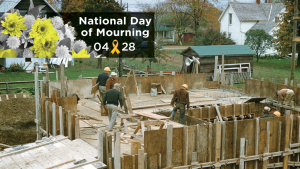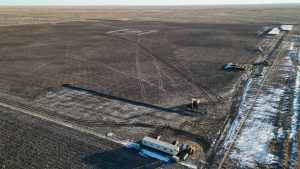The Alberta Roadbuilders and Heavy Construction Association (ARHCA) recently praised the province’s changes to work zone speed regulations, noting the Alberta government consulted with the industry to bring its policies more in step with other provinces.
“Our association was heavily involved in the updating of the (Traffic Accommodation in Work Zones) manual,” said Jenna Klynstra, public relations manager for the ARHCA. “For our members, the biggest change, and the one that got a bit of attention, was the requirement to cover up speed reductions when no workers are present and there are no safety concerns.”
This requirement will be implemented with spring road work.
Klynstra noted while the decision was welcome, there are likely few places that would apply since most work zones often have workers or other hazards that require signs.
Klynstra added the Traffic Accommodation in Work Zones regulations hadn’t been updated in a decade and it was a good opportunity for the province to modernize its manual.
“We are in full support of it, but we wanted to make sure that our workers were safe and that contractors are making the work zone safe for the public,” said Klynstra.
“I think there weren’t too many changes to the manual, but it just got it aligned with what other provinces are doing.”
The new rules also require more consistent use of road construction signs; limiting the distance of lane closures in construction zones — in most cases — to no more than three kilometres; more gradual speed reductions through construction zones; longer distances for speed transition zones that come before construction zones; and more frequent use of electronic speed displays and rumble strips to slow traffic at actual construction sites.
“One of the major complaints we hear every year is that reduced speed limits are enforced when it’s obvious no work is occurring at the construction site,” said Transportation Minister Brian Mason in a press release. “These changes will make sure our construction workers are safe as they build our roadways, while also helping commuters spend less time in traffic and more time doing the things they love.”
Alberta’s neighbour to the West, B.C., has similar policies but still receives complaints from drivers.
“The most common complaint received by the ministry is that construction speed zones are in effect when no work is occurring,” said a Transportation Ministry spokesperson following a request for comment from the Journal of Commerce. “That’s why we cover or remove speed limit signs when there is no safety concern or active construction. Our goal is to protect road construction workers and drivers while keeping people moving as efficiently as possible.”
The ministry explained while drivers may not see workers present, the speed zones are required for their own safety due to hazards like drop-offs, uneven road surfaces, narrow lanes, changes in alignment, reduced sight distances, lack of shoulders or lane markings.
“We understand that speed zones are most effective when drivers consider them reasonable,” said the spokesperson. “That means consistently following standards, keeping speed zones as short as possible, and clearly communicating where speed zones end.”











Recent Comments
comments for this post are closed